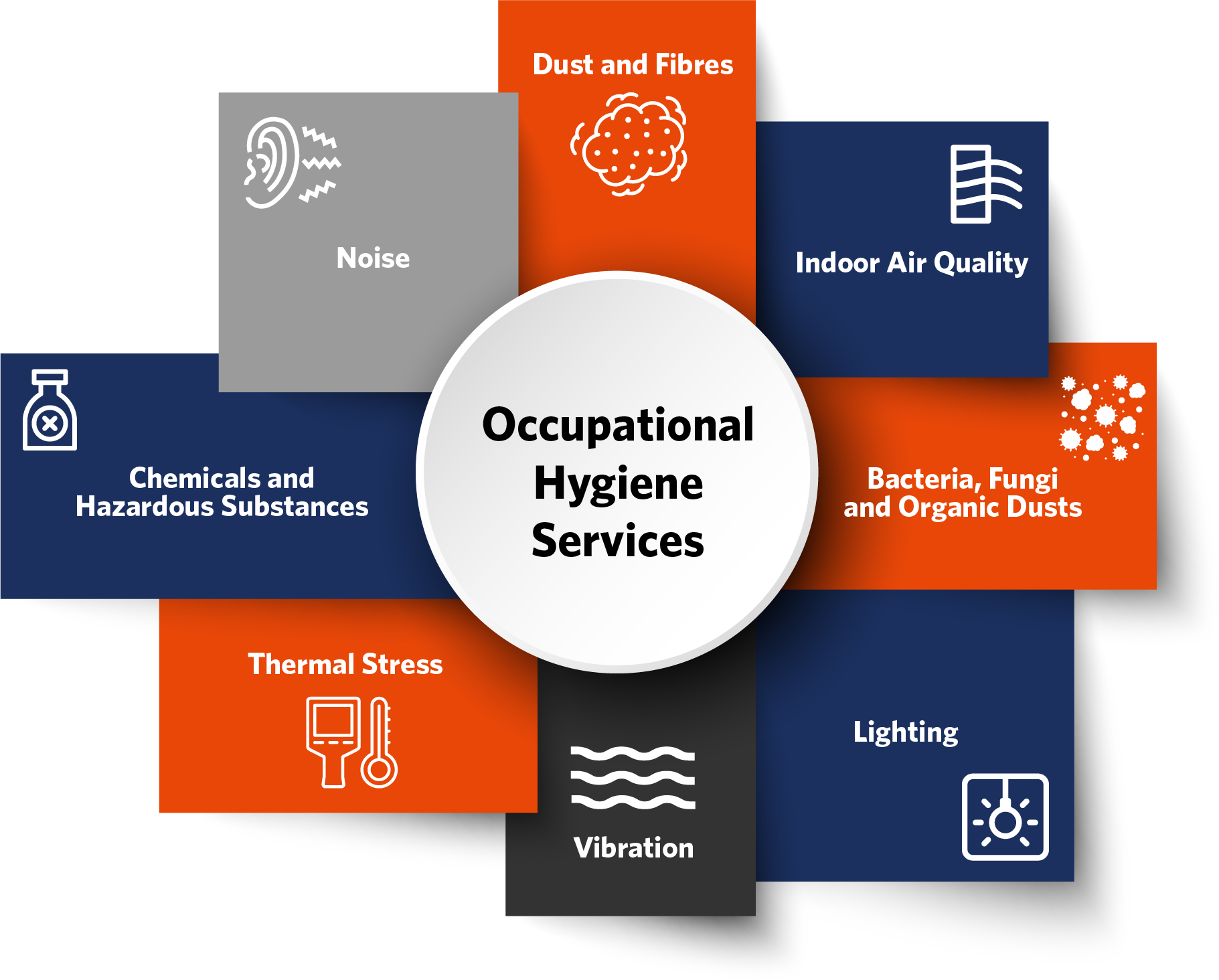With over 40 years of industry experience.

With over 40 years of experience, Peter and Le-récca have provided occupational hygiene services throughout multiple industries including oil and gas, food manufacturing, construction, manufacturing and tourism.
They both specialise in inhalable and respirable dusts, fumes, mists, gases, lighting, microbes, heat, vibration, noise, and indoor air quality.
Providing assessments of your current practices, including audits, consultancy, and advice.
Supporting you with pragmatic, tailored and cost effective advice and training alongside implementation practices.
We provide expert knowledge in chemicals, dust and biological hazards, noise, lighting, thermal stress and indoor air quality.
Dust can be irritating to both the eyes and respiratory system. Workplace exposures to dusts can result in upper respiratory tract irritation, asthma, dermatitis, chronic obstructive pulmonary disease (COPD) and cancer.
Identifying dusts in the workplace and assessing exposures and controls is key to protecting your team.
Dust exposure assessments are also a requirement of the Health and Safety at Work (General Risk and Workplace Management) Regulations 2016. WorkSafe NZ are currently focusing on asbestos, silica, welding fume, and wood dust due to their carcinogenic properties.
We own a range of equipment to both test and monitor chemicals including solvents, aromatics and other hydrocarbons. Workplace exposures to solvents and chemicals can result in upper respiratory tract irritation, asthma, dermatitis, narcosis, and cancer.
Exposure monitoring allows us to determine the concentrations of vapours and gases in a workplace, to best determine how you can minimise unsafe levels. To protect your team’s health, the identification of solvents and chemicals in the workplace, and an occupational hygiene assessment of exposures and controls is necessary.
Our occupational hygienist team can help you set up a sampling process for mould spores and other biological hazards. This can include both surface and airborne testing, and covers hazards such as lead, arsenic and asbestos.
Exposure to bacteria and fungi and organic dusts in the workplace can result in conditions such as occupational asthma, hypersensitivity pneumonitis, farmers lung, mushroom workers lung and malt workers lung.
Poor lighting can lead to headaches, eyestrain, lethargy and poor concentration. Our team can identify areas of poor lighting, glare and potential areas of strain, and recommend practical changes to help improve your environment.
Vibration monitoring can ensure that your team is safe from harmful amounts of vibration produced by mechanical equipment. There’s two types of vibrations that we test for in our workplace health monitoring NZ service – Whole Body (WBV) and Hand/Arm Vibration (HAV).
Repeated exposure of the body to elevated whole-body vibration can:
Repeated exposure of the hands to elevated vibration can result in white finger syndrome where the blood supply and nerve connections to the fingers are disrupted, resulting in “blanching” and numbness in the fingers.
By monitoring the accessing vibration through occupational hygiene testing, we can help determine ways to reduce exposure where necessary.
Exposure to elevated thermal environments can result in prickly heat /rashes, heat cramps, heat syncope/fainting, heat exhaustion and heat stroke. On the other end of the scale, exposure to low temperatures can result in hypothermia.
We can take temperature measurements across your workplace to help you better manage both heat and cold stress effectively.
Poor indoor air quality can cause fatigue and lower productivity. Our indoor air quality assessments generally address thermal and ventilation issues within the office environment.
Dust, bacterial and fungal assessments are best done wherever water and dust enter your office.
By using a range of air sampling equipment, we can assess your workplace and create a health and safety management system to suit your problem areas.
Exposure to noise is one of the most common occupational health risks in the workplace.
Uncontrolled, excessive exposure to noise can be associated with hearing loss, tinnitus, cardiovascular effects, stress and sleep disturbance.
By evaluating noise levels in the workplace, we can assist in determining the hazard, recommending controls, and ensuring that specific methods are effective in your workplace.
Occupational health focuses on the prevention and management of workplace-related illnesses and injuries. It covers everything from monitoring air quality and chemical exposure to managing noise levels and vibration risks. By integrating occupational health into your operations, you protect employees from long-term health issues, reduce sick leave, and maintain productivity across all levels of the business.
Occupational hygiene services include assessments and testing for hazards like dusts, fumes, bacteria, and poor indoor air quality. Businesses in industries such as construction, food manufacturing, tourism, or oil and gas benefit from these services to maintain compliance with regulations and protect staff health. Engaging an occupational hygienist in NZ provides expert guidance on risk identification and control.
Basic occupational safety and health training educates employees on workplace hazards, proper use of protective equipment, and safe work practices. This builds awareness and empowers staff to take responsibility for their own safety and that of their colleagues. It’s an essential component of a comprehensive health and safety management system, ensuring everyone understands their role in maintaining a safe workplace.
An occupational hygienist specialises in identifying, assessing, and controlling workplace hazards that can affect employee health. This includes managing risks such as dust, fumes, chemicals, noise, lighting, vibration, and indoor air quality. Their goal is to ensure a safe and healthy work environment by conducting thorough monitoring, providing tailored recommendations, and helping businesses meet New Zealand’s health and safety standards.
A health and safety management system provides a structured framework to identify hazards, assess risks, and implement effective controls. It ensures ongoing compliance with occupational health and safety NZ regulations and helps businesses consistently monitor and improve workplace safety. A robust system supports continuous improvement and builds a culture of safety among employees.
Workplace health monitoring NZ involves assessing and recording employee exposure to potential health risks such as dust, chemicals, noise, and vibration. This ensures early detection of harmful conditions and helps businesses implement targeted controls. Regular health monitoring demonstrates compliance with occupational health NZ requirements and safeguards employee wellbeing.